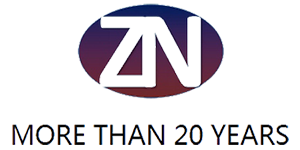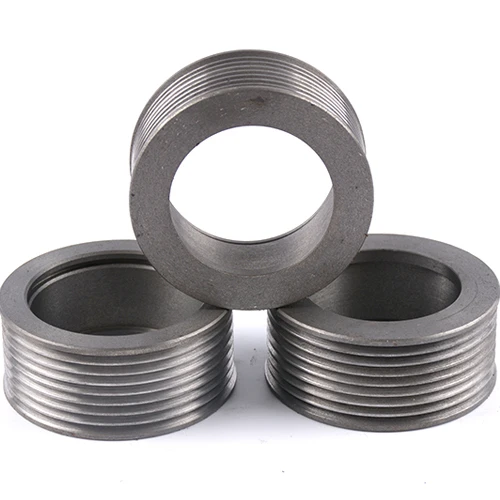The iron casting process is one of the most regularly used production systems, which includes combining liquefied metal and perpetuating it within a mold style that has been created. Among the most employed materials in different sectors worldwide, Autonomous_Vehicles However, iron casting can be a complex process and as with any other manufacturing decision factor there are pros and cons in terms of cost, quality, environmental impact etc. This article is going to further analyze some of the cost-effective ways in which iron castings are manufactured.
What are the Measures to Improve Iron CastingProcesses
Among the many cost saver methods in iron casting production, process optimization is a significant step. This is where manufacturers can use different strategies to streamline the operation and better its efficacy. Technology uses like computer-aided design (CAD) and computer-aided manufacturing (CAM) software reduces the turnaround time in mould making process. This has notably benefited manufacturers by enabling them to make more accurate and tailored molds with little space for errors or misses.
Lean manufacturing gives manufacturers yet another weapon in the war for minimizing manual labor. I am referring to heere a lean manufacturing systme that is obviously (!) built onUGINS, but sharpened d ever accompany ROBOTS. Through the foundry business, this may equate to a reduction in process steps and better flow of work through your facility - both mean savings.
Ingenious Production For Iron Casting
Over the last few years we have seen several revolutionary answers surface that promise to forever alter how iron casting is done. While some manufacturers use 3D printing technology in iron casting production, it is largely an untapped resource for the majority. Drawing the most intricate and complicated molds with a maximum precision is possible using 3D printing. Its use allows not only to abstain mechanical and labor activities on moulds manufacturing, but also reduces the cost of an order for new tools.
Another milestone in the iron casting industry is the utilization of Artificial intelligence (AI) and Machine Learning algorithms. The manufacturers will find these technologies quite handy while identifying patterns and trends in such a large dataset, leading to efficiency in the iron casting process ultimately. This includes, among others, machine learning algorithms that recognize defects in castings and indicate where the production process could then be adjusted so that less material is processed or destroyed due to damage.
Pros and Cons in iron Casting
Many other specific reasons lead to iron casting being the favorite of manufacturers. It is also durable, and strong which makes it best. This means they are widely used in heavy mechanical applications where stresses and pressures are high as the iron behaves well under these conditions, having a higher weight to strength ratio than an equivalent volume of steel.
But there are also some cons that iron casting generates and producers must overcome in order for their production cost-effective. On the production side, a big stumbling block is that melting iron takes massive amount of energy which basically means economic infeasibility. Furthermore, the extracted impurities in molten iron are too costly and time consuming to remove. Manufacturers must innovate quickly to reduce these costs in such a way that it does not have an impact on the final product quality.
Today, environmental considerations complicate cost. The footprint is very loud when you consider iron casting as it involves copious amounts of natural resources and energy consumption. Manufacturers can adopt one of many available strategies, however in this day and age some are greener than others for production of iron casting. This could involve using energy-efficient appliances so as to reduce the use of energy. A manufacturer may, for instance, choose to use an electric induction which is more efficient than the traditional furnaces. Furthermore, scrap iron and others can also be reused in the process of using iron casting by a manufacturer to reduce overall environmental waste. Balancing cost and quality At last, affordability and quality are very related thus one must consider the value of low cost iron casting for a manufacturer. The price may be an issue though they are not inexpensive. Consider that, poor quality iron casting delays the production which leads to defects leading extra cost in turn drop in revenue. Key quality characteristics of the final part need to be identified and monitored throughout manufacturing in order to follow a process that balances cost with great outcomes for manufacturers making iron castings. It is necessary to establish a culture of uninterrupted improvement and define quality-wide control procedures that track the regularity at which specific standards are met, this ensures these quality levels remain constant. Thus, any cost-effective iron casting production route would be beneficial for the economic and sustainable development of this industry. All these measures and other strategies to reduce the savings in some of how producing sector allow for high quality production, low cost. Furthermore, they are crucial when it comes to supporting the industry in terms of its growth potential and maintaining competitiveness to boost business activity as well as personal development.

 EN
EN
 CS
CS
 DA
DA
 NL
NL
 FI
FI
 FR
FR
 DE
DE
 EL
EL
 IT
IT
 JA
JA
 KO
KO
 PL
PL
 PT
PT
 RU
RU
 ES
ES
 TL
TL
 ET
ET
 TH
TH
 MS
MS



